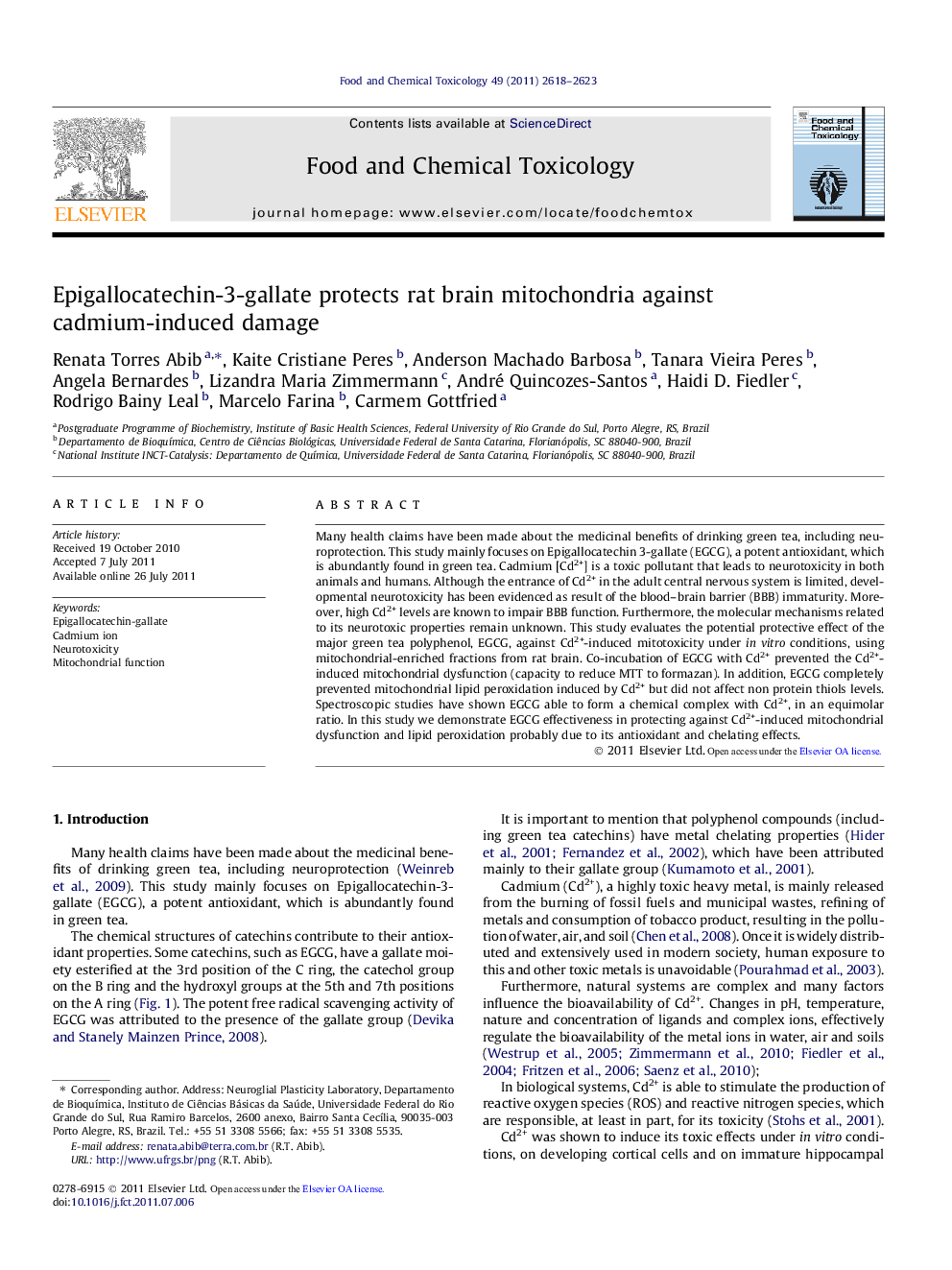| Article ID | Journal | Published Year | Pages | File Type |
|---|---|---|---|---|
| 5854072 | Food and Chemical Toxicology | 2011 | 6 Pages |
Many health claims have been made about the medicinal benefits of drinking green tea, including neuroprotection. This study mainly focuses on Epigallocatechin 3-gallate (EGCG), a potent antioxidant, which is abundantly found in green tea. Cadmium [Cd2+] is a toxic pollutant that leads to neurotoxicity in both animals and humans. Although the entrance of Cd2+ in the adult central nervous system is limited, developmental neurotoxicity has been evidenced as result of the blood-brain barrier (BBB) immaturity. Moreover, high Cd2+ levels are known to impair BBB function. Furthermore, the molecular mechanisms related to its neurotoxic properties remain unknown. This study evaluates the potential protective effect of the major green tea polyphenol, EGCG, against Cd2+-induced mitotoxicity under in vitro conditions, using mitochondrial-enriched fractions from rat brain. Co-incubation of EGCG with Cd2+ prevented the Cd2+-induced mitochondrial dysfunction (capacity to reduce MTT to formazan). In addition, EGCG completely prevented mitochondrial lipid peroxidation induced by Cd2+ but did not affect non protein thiols levels. Spectroscopic studies have shown EGCG able to form a chemical complex with Cd2+, in an equimolar ratio. In this study we demonstrate EGCG effectiveness in protecting against Cd2+-induced mitochondrial dysfunction and lipid peroxidation probably due to its antioxidant and chelating effects.
⺠This study mainly focuses on Epigallocatechin 3-gallate against Cd2+-induced mitochondrial toxicity. ⺠Co-incubation of EGCG with Cd2+ prevented the Cd2+-induced mitochondrial dysfunction. ⺠EGCG completely prevented mitochondrial lipid peroxidation induced by Cd2+. ⺠Spectroscopic studies have shown EGCG able to form a chemical complex with Cd2+, in an equimolar ratio.
